BANKERS have had their best year since the wheels came off in 2008. Bad debts are falling, customers are borrowing again and profits are back. Shareholders are smiling following major growth in dividend payments. With the bank reporting season having come to a close last week, it’s time to peer into the numbers to see who is doing the best job of it.
The answer, by quite a clear margin, is FirstRand. The group, which includes First National Bank (FNB), Rand Merchant Bank (RMB) and Wesbank, has by far the best profitability, loan performance and growth figures. With the exception of vehicle finance, the group is firing on all cylinders, generating quite incredible returns, while scooping up market share. Its numbers are helped by being focused on the second six months of 2013, while the other banks have just reported full-year results, so it benefits from the better second half, but the degree of outperformance is the result of genuinely being ahead of the game.
The place of most improved bank has to be taken by Nedbank, which has managed to creep its way into second place, at least in terms of profitability. Barclays Africa Group (largely Absa), too, has shown it has turned the corner in its cycle, with good improvements in profitability and other performance areas.
Standard Bank, then, stands out for seemingly going in the wrong direction, with return on equity the weakest in the market, though its ongoing restructuring will position it well for a turnaround in performance as capital is now better allocated to more profitable businesses.
With the banks now making between 14.1% (Standard Bank) and 23.4% (FirstRand) returns on equity, the banking market is starting to look like the good times of the mid-2000s. There is one major exception to this rule though: home loans.
While the last banking cycle was driven by sharply increasing property values, which were then monetised by home owners via increased mortgages, the banking recovery in this cycle has been driven by other assets. These have been largely unsecured loans, evolving from personal loans to credit cards and vehicle finance.
Home loan growth remains on the back foot. Nedbank actually decreased the size of its loan book during the period, by 2%. The largest growth was experienced by FNB, which lifted home loans 5%, largely as it has more new customers walking through its doors than other banks, rather than its risk appetite being bigger.
The trend looks set for change, even as we face higher interest rates. The profitability of home loans is shooting upward, and the aggressive interest rate margins banks have been charging will start to relax. Bad debts have fallen at all four of the big banks, with borrowers much better able to service their loans. So although the banks are being slow in issuing new loans, the returns for doing so are increasing. Inevitably, bank risk appetite will improve and that will stimulate the property market, triggering a virtuous cycle.
Unsecured lending, which has often been accused of portending doom, has seen a dramatic slowdown. Nedbank led this reversal with a cut in personal loans by almost 10%, FirstRand by 2%, while Absa grew its book 3% from a low base. Standard Bank, however, is running in the opposite direction, growing its unsecured lending by 22%.
The odd thing is that despite Standard Bank’s high base and rate of growth, the credit performance of its unsecured loan book actually improved, with just 5.7% of the book nonperforming, down from 6.5% a year earlier. It is not at all clear how Standard Bank is managing to be the exception in the market.
In corporate banking there are also signs that better conditions are taking hold. Corporate lending has increased across the industry, suggesting that businesses are gearing for growth. One strong area appears to be commercial property finance, to which all of the banks have increased exposure. In investment banking there have also been some strong performances, with the strong JSE encouraging more capital raising.
The renewable energy investment programme led by the government has also stimulated significant lending, particularly for Nedbank, RMB and Standard Bank. Billions of rand of renewable projects are now being constructed, drawing down on loan facilities from the banks, allowing for asset growth at minimal effort.
Will the banks keep it up? Yes, but it won’t be easy. Consumers are still a problem — employment and salary growth is subdued.
Economic growth is the basic constraint for the banking sector, though individuals can outperform (as FirstRand has) by grabbing market share and others (such as Standard Bank and Barclays Africa Group) can use geographic diversity to wring profits out of other countries and rand weakness. What growth can be generated locally, though, will be more profitable thanks to higher efficiency at the banks, the one way banking growth can outpace economic growth.


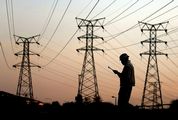


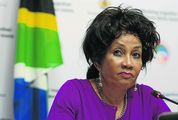


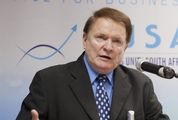
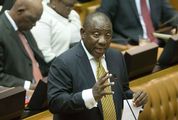
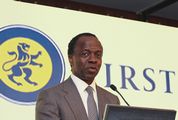
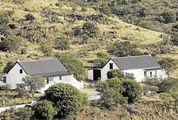




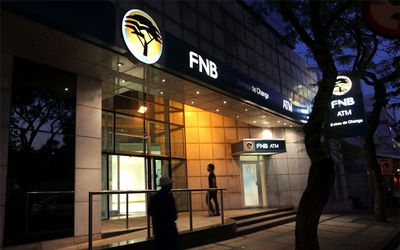





Register/Login
Close XMy News
You can only set up or view personalised news headlines when you are logged in as a registered user. Thereafter you can choose the sectors of industry in which you are interested, and the latest articles from those sectors will display in this area of your console.
Login or Register.Top Stories
My Watchlist
You can only set up or view your share watchlist when you are logged in as a registered user. Thereafter you can select a list of companies and enter your share details to monitor their performance.
Login or Register.My Clippings
You can only clip articles when you are logged in as a registered user. Thereafter you can click on the "Read later" icon at the top of an article to save it to this area of your console, where you can return to read it at any time.
Login or Register.Change: -1.21%
Change: -1.31%
Change: -1.11%
Change: -1.12%
Change: -2.16%
Data supplied by Profile Data
Change: 0.00%
Change: 0.00%
Change: -1.21%
Change: 0.00%
Change: 0.00%
Data supplied by Profile Data
Change: -0.05%
Change: 0.05%
Change: 0.05%
Change: -0.09%
Change: -0.29%
Data supplied by Profile Data
Change: 0.00%
Change: 0.00%
Change: 0.00%
Change: 0.00%
Change: 0.00%
Data supplied by Profile Data